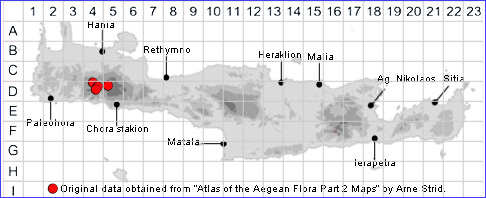SPECIES DESCRIPTION
ONOBRYCHIS SPHACIOTICA
Family and Genus:- See- LEGUMINOSAE/Sect. LOPHOBRYCHIS
Common Names:- None
Homotypic Synonyms:- None
Meaning:- Onobrychis (Gr) Ass-bray (a name used by the Greek physician
Dioscorides for a legume eaten by asses).
Sphaciotica (Gr) Damaged-looking, of gangrened appearance.
General description:- Bushy perennial herb, somewhat woody at base, with
several simple or sparingly branched.
Stems:-
1) 30-60 cm, forming bushes up to 1 m wide.
Leaves:-
1) Leaflets, of the lower leaves 12-16 pairs, up to 30 x 5 mm, oblong-elliptical or
broadly linear, sparsely sericeous beneath.
Flowers:-
1) Peduncles, long, straight.
2) Racemes, 15-30-flowered, broadly cylindrical at anthesis, much elongating in
fruit.
2) Calyx, sparsely villous; teeth linear-lanceolate, 2-3 times as long as the tube.
3) Corolla, c. 15 mm, bright purplish-pink
a) standard, entire or truncate, ± equalling the keel.
Fruit:-
1) Legume, c.10 mm, sericeous-pubescent, with the hairs at least 0·5 mm,
sides toothed; margin with 8-10 teeth, 1-3 mm.
Key features:-
1) Standard, entire or truncate.
2) Legume, margin, with 8-10 teeth; teeth not more than 3 mm.
3) Leaflets, 12-16 pairs.
Habitat:- Crevices of limestone cliffs, very open woodland of Cupressus
sempervirens. 1400-1750 m.
Distribution:- Endemic W. Crete (Lefka Ori). Rare.
Flowering time:- Late May to early June.
Photos by:- Fotis Samaritakis
Status:-
Conservation status (for threatened species): Vulnerable (V) according to IUCN
1997
Protection status (for threatened species): Greek Presidential Decree 67/1981

